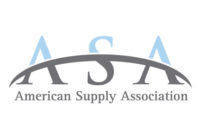As part of this year’s NETWORK2020 Virtual event, three leading PHCP-PVF distributors sat down with ASA’s Mike Miazga for a special panel discussion on the importance of employee training. The full-length video interview can be accessed by ASA members in the MY ASA portal at www.asa.net.
Jack Bell, president and CEO of Louisville, Kentucky-based Masters Supply, James Perry (operations manager) and Bridget Van Alstine (training coordinator) of Colorado Springs, Colorado-based Rampart Supply, and Jim Wakeham, branch manager of Southern California-based industrial PVF master distributor Industrial Valco, shared stories of their various challenges with training prior to engaging with ASA University and its staff of training and education experts, and how the tide turned once ASA University entered the picture.
“Ten years ago when we were smaller, we used ASA University paper books and had a good mentor program going,” Perry says. “Due to the company’s growth, we got away from it, and we started to see a decline in productivity and knowledge.”
Bell says Masters’ biggest problem was developing robust job descriptions. “We tried to create our own job descriptions, but they were very vague and not good,” he says.
Wakeham adds Industrial Valco had its eyes opened when it started looking at all ASA University has to offer member companies and employees. “We didn’t think we had any challenges until we saw the breadth of what is offered at ASA,” he says. “It’s a lot. We came in with the attitude that we already have training, and then we see what ASA has and it covers subjects we didn’t even think about. It brought us back to thinking we have to make some changes, and then we started talking to the people at ASA. We were totally missing out on other avenues of training that we didn’t even think about.”
Masters Supply jumped right in and utilized ASA University’s catalog of robust job descriptions. “We saw ASA created its own base of job descriptions and we immediately went to them,” says Bell, who noted Masters also is utilizing ASA-U role-based training. “They are awesome. They covered things legally, and are a lot more in-depth than what we had before.”
In terms of roadblocks with training implementation, the panelists say concerns in the beginning centered around two key areas: Supervisor buy-in and time. “We had the same challenges with buy-in from supervisors and managers,” Van Alstine says. “We struggled at first with getting supervisors to understand that if we take them for two weeks and take them through a structured onboarding plan, then they would be more productive a lot faster. We had to persevere with that. Once we got a few people through training, the buy-in gained momentum.”
Wakeham says the time factor is certainly a key discussion point. “Everybody thinks they don’t have time,” he says. “In that situation, you have to say you just do 30 minutes or complete the whole thing if you want. What’s great about the ASA University training is you can stop and go back to the exact same spot.”
Bell admits prior to engaging with ASA University, training methods at Masters were old-school in nature. “Training before we started with ASA was go over to Joe and learn what he is doing,” he says. “I’m sure a lot of companies did that for years.”
Bell has some pointed advice on the importance of establishing a culture of employee training. “We didn’t have a training culture until the last four or five years,” he says. “We consider it very important — as important as growing sales, growing margin and reducing expenses.”
Perry says the traditional one-on-one interaction with an experienced veteran employee still remains important. “I don’t think you can fully replace it, but we have seen a dramatic reduction in the number of errors and an increase in productivity in entry-level positions,” he says in reference to involvement with ASA-U. “It’s giving folks a pathway to gain knowledge and move up in the company. Having the ASA product knowledge is a great tool to have for folks to move up when positions are open.”
Bell says getting that supervisor-management buy-in continues to be of utmost importance. “Once you have the buy-in, they will understand the future growth of the company depends on high-performing employees, and this is a fast track to get there,” he says. “Sell it to the managers first and then let it trickle down to employees.”
Wakeham adds: “The more you work with ASA University, the more you will learn. You can go to YouTube and learn about a strainer, but if you want to know how to buy a strainer, where to put it in the warehouse and how accounting calls up and collects money for it, you have to go to ASA. They have it all handled.”




